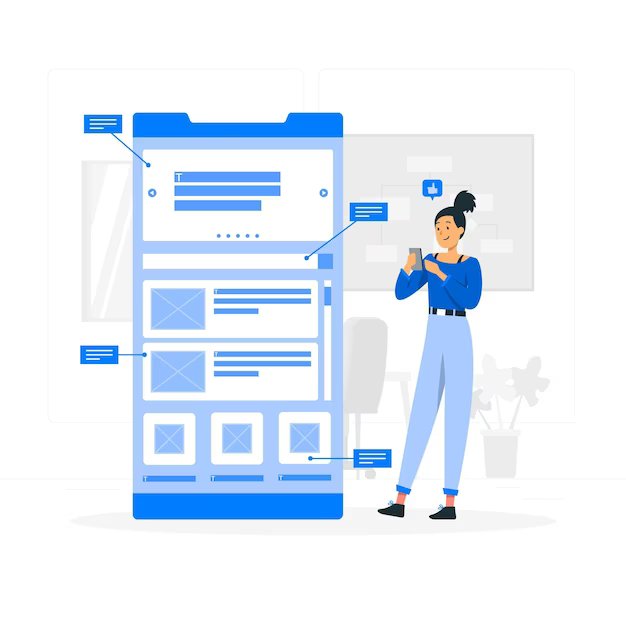This article delves into the domain of Flutter for web, uncovering its potential in constructing cross-platform web applications.
Introduction to Flutter for the Web
Flutter for the web represents an extension of the Flutter framework, enabling developers to construct web applications using the same codebase employed for mobile apps. This approach not only reduces development time but also ensures uniformity across diverse platforms.
Key Benefits of Flutter for the Web
- Unified Codebase: Flutter for the web empowers developers to write code once and deploy it on both mobile and web platforms, substantially reducing development overhead.
- Rich User Interfaces: Leveraging Flutter’s extensive widget library, developers can craft visually captivating and interactive web applications with ease.
- Optimal Performance: Flutter compiles into highly optimized native code, delivering swift and efficient web applications that rival native web development.
- Instant Feedback with Hot Reload: The hot reload feature allows developers to witness immediate changes in their web applications, enhancing productivity throughout the development journey.
- Access to Native Features: Flutter’s robust package ecosystem grants access to device features and native capabilities, even in web development.
Setting Up Your Development Environment
Before embarking on the creation of Flutter web applications, it is essential to configure your development environment. Ensure that Flutter and Dart are installed on your system. You can initiate a new Flutter project as follows:
bashCopy code
flutter create my_web_app
Subsequently, navigate to your project directory and enable web support:
bashCopy code
cd my_web_app
flutter config –enable-web
This straightforward setup readies your environment for both mobile and web development.
Building Your Inaugural Flutter Web Application
With your development environment primed, you can commence the construction of your first Flutter web application. Here’s a step-by-step guide:
Establish a Web Entry Point
In the realm of Flutter for the web, it is imperative to designate a web entry point—the initial launching pad for your web application. By default, Flutter generates a web directory in your project, housing your web-specific code. Typically, this entry point resides in web/index.dart.
Crafting the User Interface
Flutter’s widget-based architecture simplifies the design of your web application’s user interface. You can employ a blend of built-in widgets, tailoring them to create a visually pleasing and interactive interface. Notable widgets encompass Text, Container, Row, Column, and an array of others.
Infusing Interactivity
Flutter’s widgets are not confined to static UI elements; they are imbued with the power of interactivity. You can infuse life into your web application by employing widgets such as GestureDetector and InkWell to handle user interactions.
Navigating Your Application
For web applications with multiple pages, it is essential to implement navigation. Flutter provides the Navigator widget, facilitating the seamless transition between screens as users navigate through your application.
Local Testing for the Web
To locally test your web application, execute the following command:
bashCopy code
flutter run -d web
This command launches a local development server and opens your web application in a browser. The inclusion of hot reload ensures that changes are reflected instantly, enhancing your development workflow.
Deploying Your Web Application
Once you are satisfied with your web application, it is time to deploy it. Numerous hosting options, including Firebase Hosting, Netlify, or GitHub Pages, await your deployment, extending the reach of your creation across the vast expanse of the internet.
Handling Platform-Specific Scenarios
While Flutter strives for code reusability across platforms, scenarios may arise where platform-specific code is necessary. Flutter provides mechanisms to navigate these scenarios.
Conditional Code Execution
Conditional statements are a powerful tool for executing code based on the target platform. They enable you to accommodate differences in APIs or libraries between web and mobile platforms.
Bridging Platforms with Platform Channels
If the need arises to access web-specific APIs or functionality, Flutter’s platform channels offer a conduit for seamless communication between Dart (Flutter) and native code.
Optimizing for the Web
To ensure that your Flutter web app performs optimally, consider the following optimization techniques:
Code Splitting
Code splitting enables you to load only the necessary code for the current page, improving the initial loading time of your web application. Flutter’s web support includes tools to facilitate code splitting.
Efficient Asset Management
Manage assets such as images and fonts efficiently to reduce loading times. Asset bundling allows you to include only the assets required for your web application.
Responsive Design
Ensure that your web application adapts gracefully to different screen sizes and orientations. Flutter provides tools and widgets for creating responsive layouts.
SEO and Metadata
To enhance discoverability by search engines, incorporate appropriate metadata and explore the implementation of server-side rendering (SSR) for SEO optimization.
Challenges and Considerations
While Flutter for the web offers numerous advantages, it is important to acknowledge some challenges and considerations:
Browser Compatibility
Flutter for the web may not offer full compatibility with all browsers and platforms. Rigorous testing across various browsers is essential to identify and address compatibility issues.
Web-Specific Features
Some web-specific features and APIs may not be readily available in Flutter. In such cases, you may need to explore third-party packages or develop custom code to implement these features.
Performance Optimization
While Flutter is renowned for its performance, complex web applications may encounter performance challenges. Profiling and optimizing your code are essential to ensure a seamless user experience.
Conclusion
Flutter for the Web stands as a formidable tool for building cross-platform web applications from a single codebase. Its ability to deliver a consistent user experience across web and mobile platforms, coupled with its extensive widget library and high-performance capabilities, positions it as an excellent choice for web development.
By configuring your development environment, adhering to best practices, and addressing platform-specific considerations, you can create visually stunning and responsive web applications using Flutter. Whether you are a mobile app developer venturing into web development or a web developer exploring new horizons, Flutter for the web offers a compelling solution for your cross-platform development endeavors.






Comments
0 comments